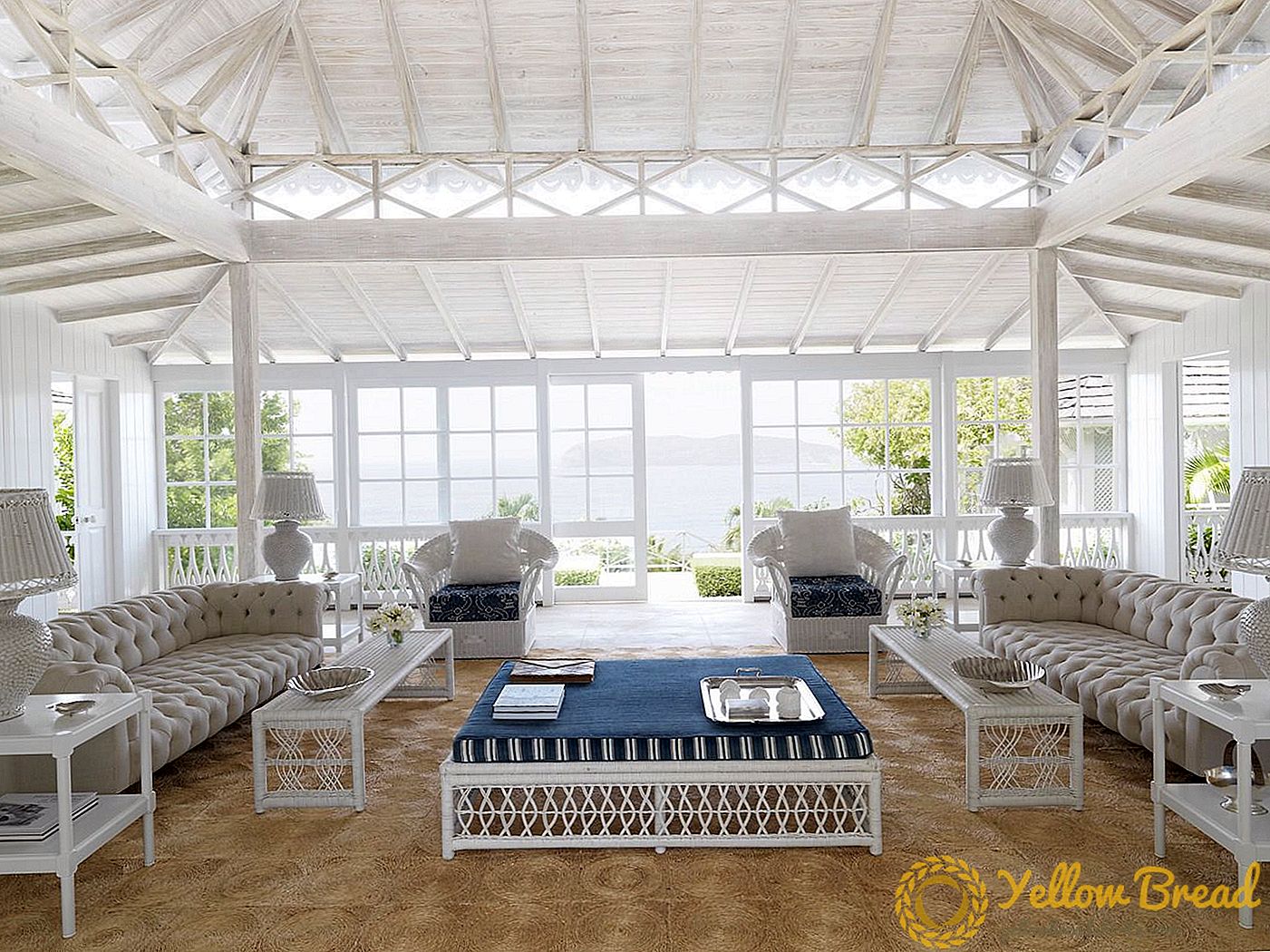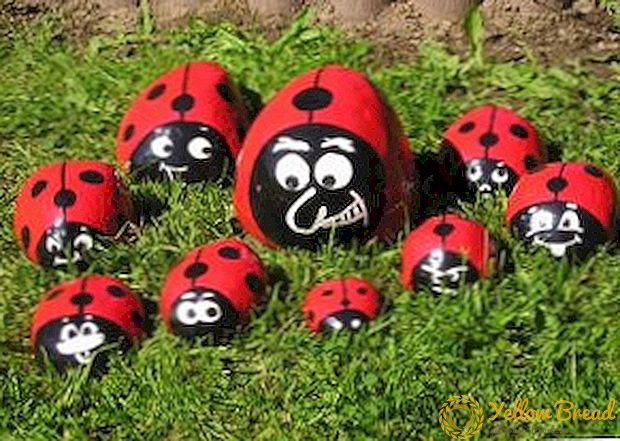"If you think of Mustique, you think of the 1970s,” says the decorator Veere Grenney of the Caribbean hideaway where rock royalty (including Jaggers and Bowies) once partied alongside actual royalty. In fact, it was Queen Elizabeth II's globe-trotting younger sister, Princess Margaret, who first popularized the island with the jet set.

The living room's chesterfields are by Soane Britain, and the ottoman's cushion is edged in a de Le Cuona stripe.
Mustique's allure has always been low-key: There is a simple landing strip rather than a proper airport, no nightlife to speak of, and, in the island's heyday, the roads were unsur-faced dirt tracks. But both then and now, it has offered the greatest luxury of all: privacy.
“When the houses here were built, they were absolutely charming, but most had no real luxury, per se,” says Grenney, the renowned New Zealand-born, London-based interior designer. “They were slightly old-fashioned and very English.”

The pool terrace is arranged with chaises by McKinnon and Harris.
Many of the most desirable properties on the island were built by Oliver Messel, the English theater designer who moved to the West Indies around 1960 to carve out a new career as a designer of homes. The architecture he created was calm, unpretentious, nostalgic, and put together with a set designer's eye for proportion, along with overtones of colonial villas and cricket pavilions.

A guest room's vintage armchair is from Guinevere. The curtains are of a de Le Cuona linen.
The getaway called Obsidian is a case in point. Designed by Messel in the '70s for the society photographer Patrick Lichfield, the beguiling waterfront property consists of a series of airy, gazebo-like structures that feel at once trop-ical and quintessentially British; even the delicate lacework boards around the roof bring to mind the awning of a railway station in rural England. Grenney points out that the property is imbued with the relaxed spirit of its era: “It's all wicker, it's all treillage, it's all very simple detailing, nothing sophisticated,” he observes.

In the billiard room, the antique Hamilton billiard table was repainted white. Vintage floor lamp, Serge Roche. Pendant, Charles Edwards.
The current owners bought the house after Lichfield passed away in 2005, and they tasked Grenney with reworking the entire property in such a way that it remained as authentic as possible. While the decor had been practically unchanged since the home was built, the ravages of heat and sea air had taken their effect on the woodwork. Every window had to be removed, and every piece of timber replaced with more durable hardwood alternatives, painted white as before.
“But if you knew it in the old days, you would think very little has changed.”

In the master bedroom, the armchair and ottomans are from Dean Antiques.
Not that Grenney was simply overseeing a conservation effort: His ethos is more about staying true to the “sensibility” of a property. Thus the furniture is antique, reupholstered in antique white linens to fit with the minimalist color scheme. The exception is the wickerwork dining suites, which were custom made by Soane Britain in London to the original designs.

In the dining room, the custom wicker table and chairs by Soane Britain were based on vintage designs.
The result is a subtly upscaled version of what the house always was; it's still relaxed and unassuming, but stealthily luxurious too. “It's now much easier to maintain, although, this being Mustique, nothing lasts very long,” he notes. Perhaps not. But one gets the feeling that if Veere Grenney has anything to do with it, Obsidian will endure.






